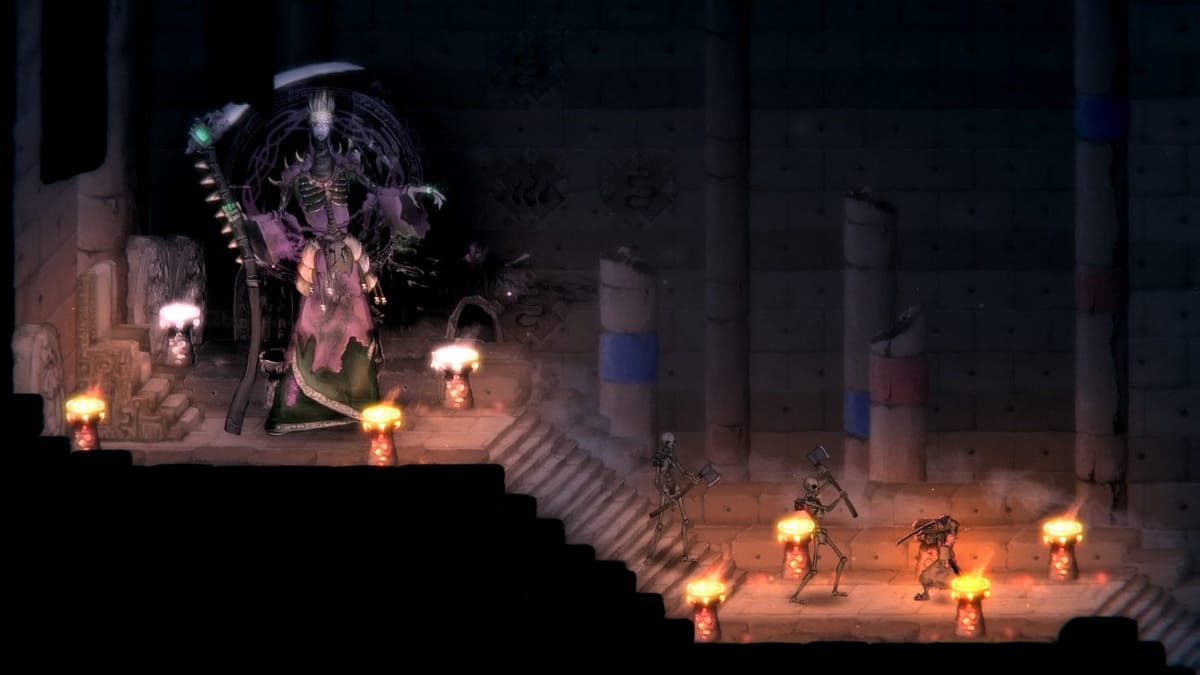
Salt and Sacrifice, created primarily by two individuals, James Silva (art, animation, level design, etc.) and Shane Lynch (netcode, etc.), is a prime example of what can stem from a couple of talented people with a steadfast vision working together. These two, along with the help of Maclaine Diemer (Composer) and Alex Kain (Narrative Designer), have created a fantastic homage to both the Souls series and Metroidvania titles while still being unique enough to stand out on its own merits.
Of course, Silva is no newcomer to the indie video game circuit, having created the previous entry in this series, Salt and Sanctuary, and one of my favorite forgotten indies from the Xbox 360 era, I MAED A GAM3 W1TH Z0MB1ES 1N IT!!. A frantic and hilarious twin-stick shooter which I still find myself booting up from time to time anytime I get its hysterical soundtrack stuck in my head.
Like the Souls series, Salt and Sacrifice wastes no time thrusting players into the game, providing as little exposition as needed to get the game rolling. The story is simple enough; Altarstone Kingdom, threatened by mages, has formed a Marked Inquisition consisting of criminals to find and destroy all sources of magic. Players will take on the role of a Marked Inquisitor and promptly be set on a quest to hunt down all Mages and restore balance to the Kingdom.
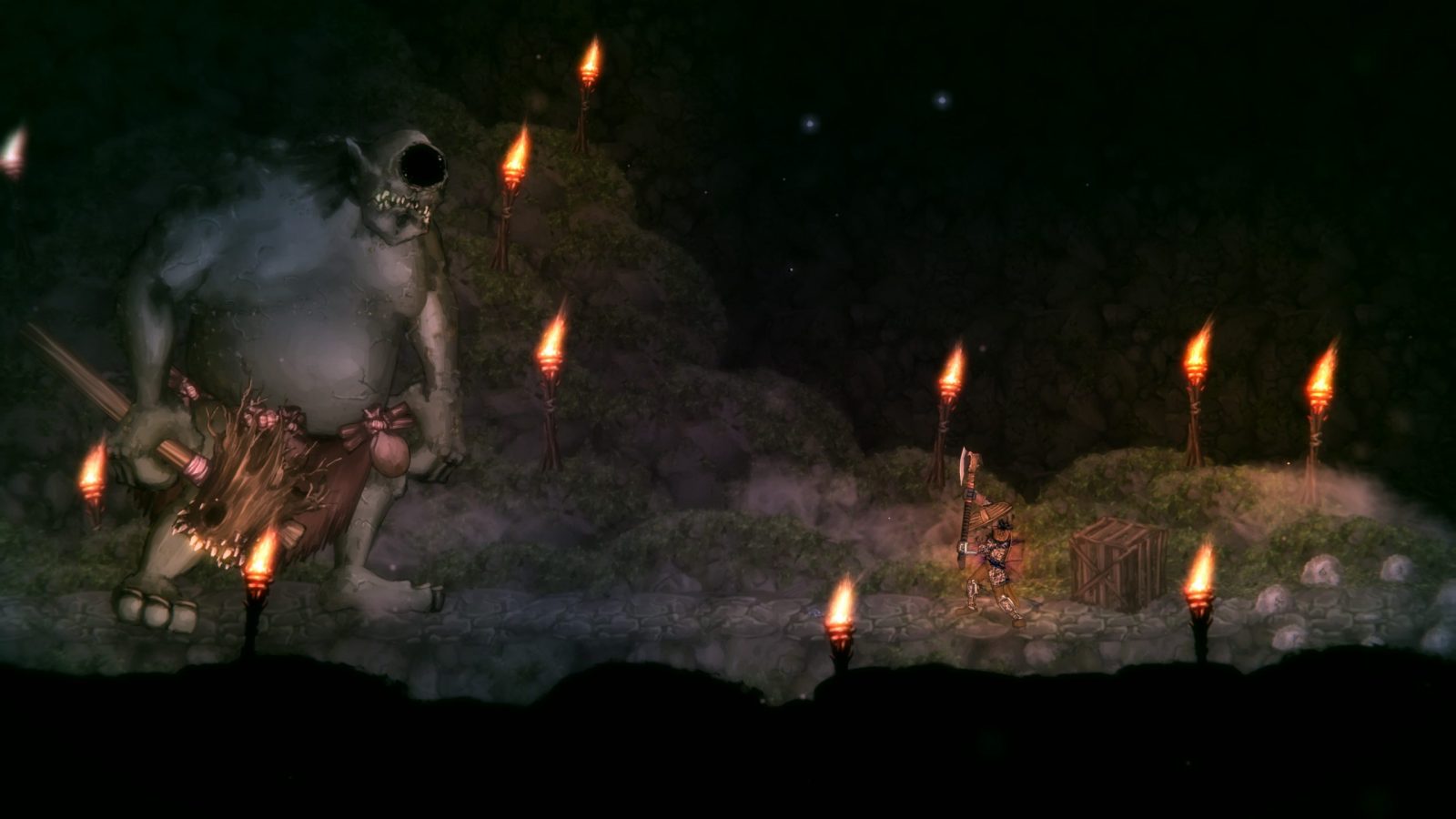
Salt and Sacrifice is a single player game at heart, but in true Souls fashion, allows players to inhabit other players’ games to help defeat bosses, or to come to the aid of players asking for help. Multiplayer is as simple as lighting one of two candles, one which calls for aid and another which offers your aid, and then waiting a few seconds. I rarely had to wait more than a minute or two to connect to other players, and the connection was nearly always seamless and quick. I was impressed by how great the multiplayer features work and almost wish a system like this was implemented in the Souls series – instead of hundreds or thousands of players fighting over summoning the same sign on the floor, you can just light a candle and the next available player will join, ensuring you will always find a co-op player. There is also a board in the main hub which can be used to set multiplayer passwords so you and a couple friends can team up and play through the entirety of the campaign together if you choose.
There are five distinct regions to explore, each guarded by progressively difficult Mages and bosses. Each region is accessed via a portal in your hub world, but to visit an area you must have the corresponding rune set. Rune sets are found by progressing the story line in each area, normally being given to you as you complete the level’s main goal. In each region you will encounter story bosses, as well as Named and Unnamed Mage Hunts. Named Mage Hunts are required to be completed – or more correctly, to be defeated and their hearts devoured – to access specific areas which are held shut by warding spells and only able to be unlocked after the required amount of Mage hearts are consumed. Each area is chock full of locked doors, secrets to uncover, and optional Mage hunts.
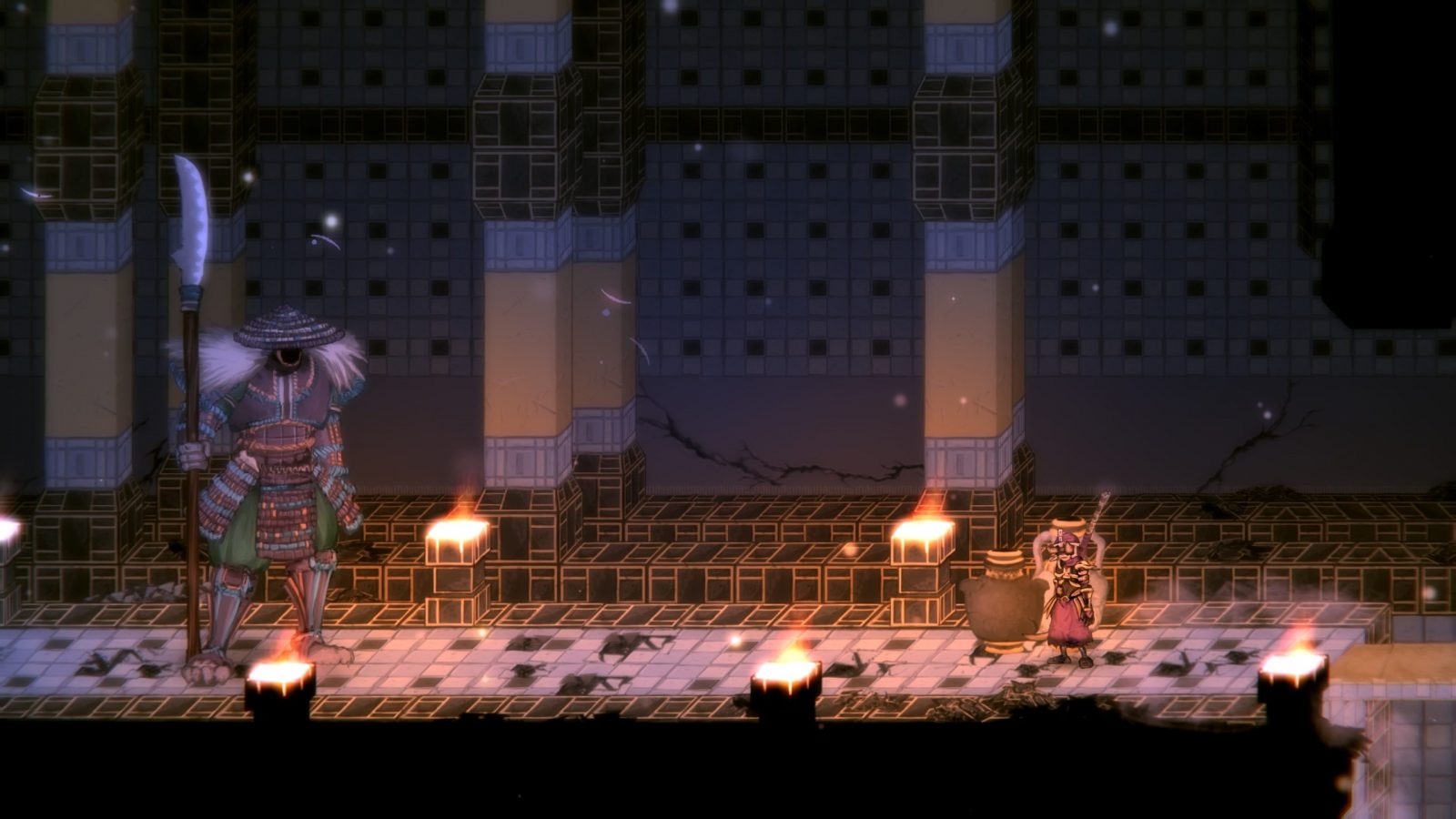
As you explore the massive worlds – which unfortunately do not have a map, a glaring omission as maps are greatly needed in any Metroidvania type title – you will encounter exciting Mage Hunts which you can choose to begin at once or come back to when better prepared. Once you begin a hunt the world will change, adding in more difficult enemies and frequent boss battles with the Mage in question as you play out a sort of cat-and-mouse hunt through the level until the final encounter where you must defeat the Mage and consume their heart. This find/chase/defeat playstyle makes up a large portion of the game and thankfully rarely becomes tedious aside from a few of the more difficult bosses which tend to spawn in areas already inhabited by a plethora of enemies, or a few chases which seem to last far too long and involve an unnecessary amount of backtracking. Still, the majority of the hunts are fun, especially when tackled in co-op.
Co-op really is what makes Salt and Sacrifice special, and adds an incredible amount of replayability to what is a great, but sometimes repetitive, game. I quickly found myself getting into a rhythm in each world: I explored on my own until I ran into a Mage Hunt. I activated the hunt and then summoned two co-op partners, completed the hunt with my new friends, and then went back to exploring solo until I stumbled upon the next hunt. When I got a bit lost, felt underpowered, or just got tired of exploring in my world I would light my candle offering aid to other players and almost instantly found myself in someone else’s world. This not only serves as a great way to level up, but also helped me see areas that I may not have yet unlocked and to be better prepared for what was to come in my journey.
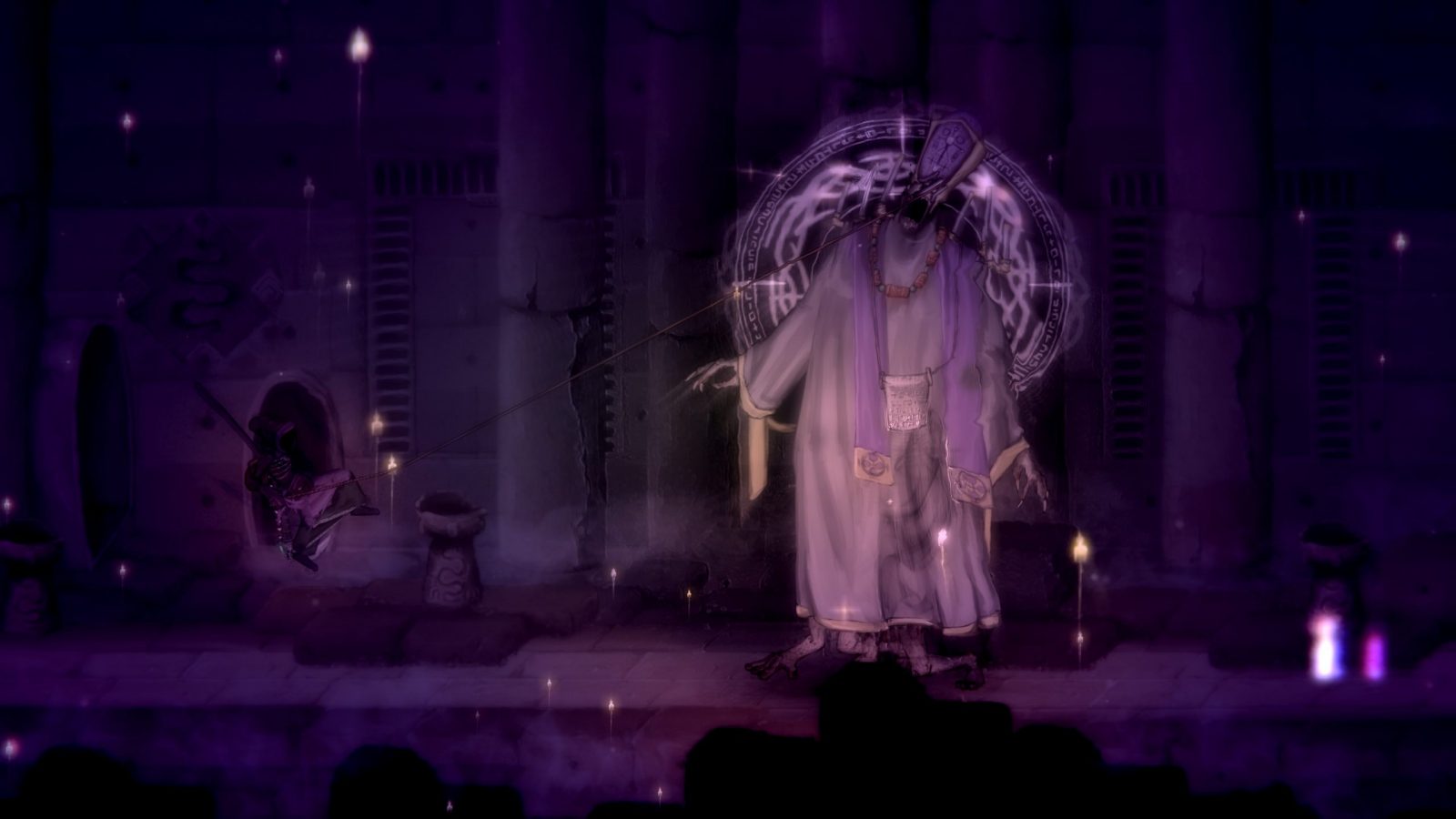
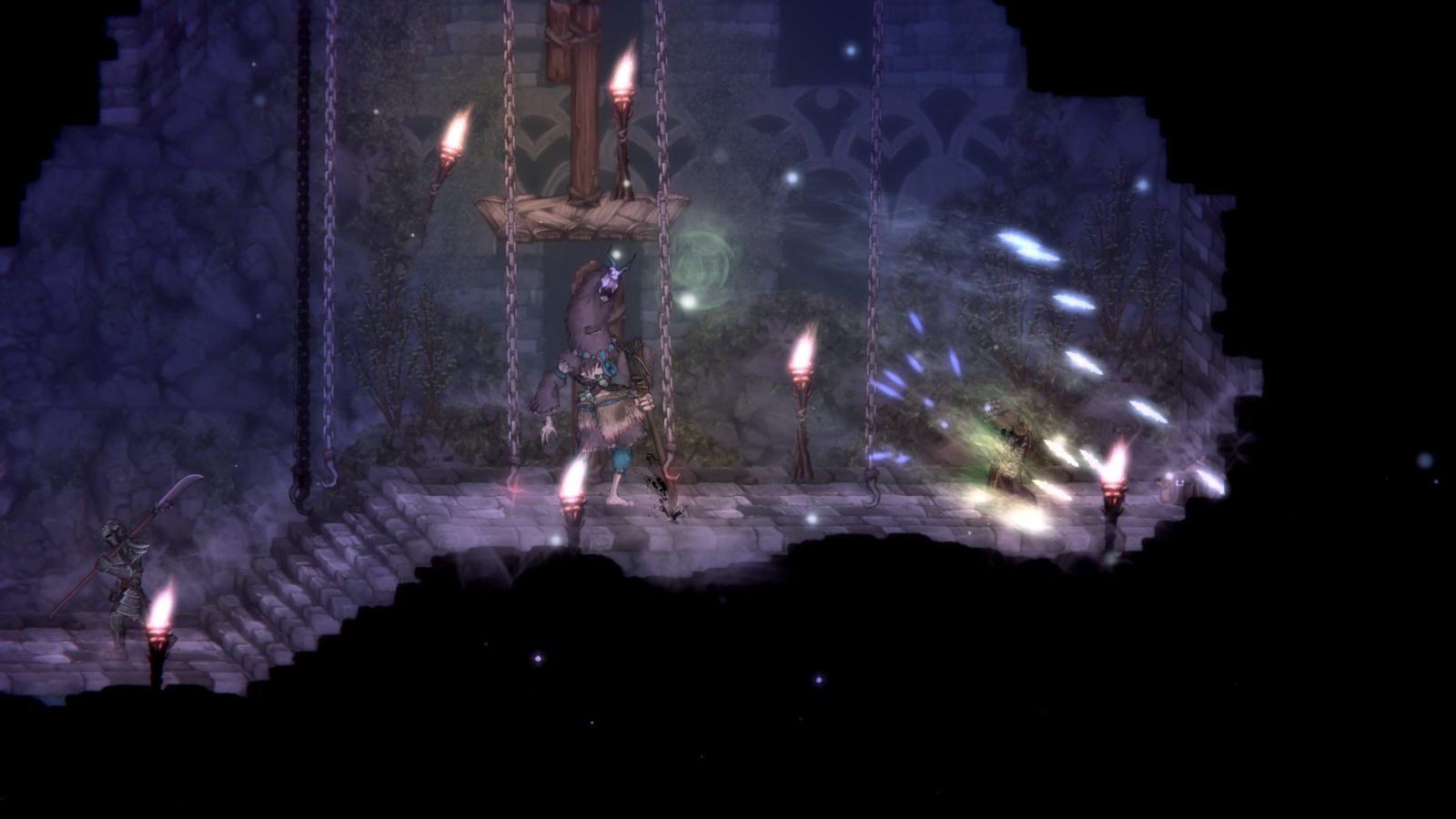
Salt and Sacrifice takes cues from the Souls series by providing players with a plethora of weapons and armor to unlock or craft, all of which are upgradable, along with flasks to restore health which can be reinforced. To craft and upgrade you use materials that you obtain either via defeating enemies or from combining ingredients you find throughout the level. Nothing that you consume is infinite, including your health flasks, you must collect ingredients in the levels to make sure that you constantly have enough supplies to refill your stock whenever you rest, otherwise you may find yourself stuck on a boss with no health and no options but to give up the hunt.
Likewise, the game also pulls from Metroidvania type games by providing sprawling levels to explore with areas inaccessible until you obtain the right equipment, after which you can backtrack and then explore, unlocking new paths around the level. It’s a great combination of styles that works more often than it doesn’t, but as I mentioned previously the lack of a map greatly hurts exploration. Sure, you will learn the lay of the levels eventually, but having a map which would show you where you’ve been, locked doors you’ve encountered, and more would have helped make exploration less tedious, as much of the time I wandered aimlessly looking for an area I had found hours before that had been blocked, hoping that I stumble across my next objective.
Levels are filled with Obelisks, which serve as save points when activated while also restoring your consumables, and if you die you will return to the last obelisk rested at. Death will see you lose your current experience and money and you will need to return to where you died and retrieve your lost items or else risk losing everything if you die while enroute.

To level up you spend your experience points, which will raise your health and provide you with black and gray starstones, which can then be used to unlock skills and improve attributes. You do not begin with the ability to wear all types of armor or wield all types of weapons, rather you will need to unlock those abilities while also increasing your strength, dexterity, vitality, endurance, stamina, and more. It’s a neat system that allows you to easily level up exactly the attributes you want, without having to focus any points into unnecessary traits.
While exploration and the diverse world is a treat to explore, it does become burdensome after you traverse each area countless times looking for sealed doors or chasing Mages. Allowing the obelisks to serve as fast travel points (at least when not actively participating in a Mage Hunt) would have helped to alleviate this tremendously. If you choose to return to the hub at any time you will have to start the level from the beginning area again, and if you quit the game during a level you will respawn at the central hub when you turn the game back on – which is rather disappointing.
Salt and Sacrifice
Great
Despite my minor complaints, Salt and Sacrifice is an insanely fun Souls-like featuring brutal challenges, great level designs, beautiful hand drawn graphics, interesting enemies and boss fights, cool gear to find and upgrade, a fun leveling system, and one of the most enjoyable co-op experiences I’ve had in quite a while. The fact that this game was designed by so few people and is of such high quality for a relatively low MSRP of $19.99 is nothing short of astounding. While not perfect, Salt and Sacrifice kept me entertained for well over 20 hours and made me excited for the next entry in this incredible series.
Pros
- Great co-op features
- Large, diverse levels
- Extremely challenging
Cons
- Lack of a map greatly hurts a game with this much ambition
- No fast travel
- Mage hunts, while fun, can grow repetitive towards the end
